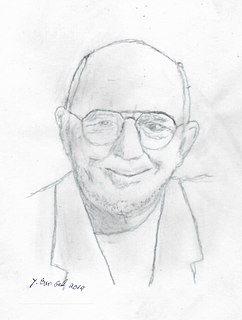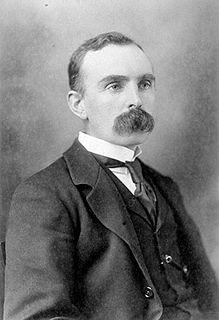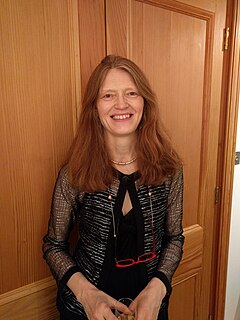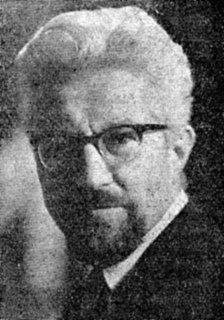 W
WRonald Francis (Ron) Abler is an American geographer at Pennsylvania State University and an Elected Fellow of the American Association for the Advancement of Science.
 W
WAlexander Emmanuel Rodolphe Agassiz, son of Louis Agassiz and stepson of Elizabeth Cabot Agassiz, was an American scientist and engineer.
 W
WJohn Frederick Baddeley was a British traveller, scholar and journalist, best known by his works on Russia and the Caucasus region.
 W
WJohn George Bartholomew was a Scottish cartographer and geographer. As a holder of a royal warrant, he used the title "Cartographer to the King"; for this reason he was sometimes known by the epithet "the Prince of Cartography".
 W
WBrian Joe Lobley Berry is a British-American human geographer and city and regional planner. He is Lloyd Viel Berkner Regental Professor in the School of Economic, Political and Policy Sciences at the University of Texas at Dallas. His urban and regional research in the 1960s sparked geography’s social-scientific revolution and made him the most-cited geographer for more than 25 years.
 W
WWalter Christaller, was a German geographer whose principal contribution to the discipline is central place theory, first published in 1933. This groundbreaking theory was the foundation of the study of cities as systems of cities, rather than simple hierarchies or single entities. He was primarily concerned with the urban space and worked on the role of towns as geographic-economic units, besides analyzing the relationships between towns of the same region.
 W
WArthur Philemon Coleman was a Canadian geologist and academic.
 W
WOsbert Guy Stanhope Crawford was a British archaeologist who specialised in the study of prehistoric Britain and the archaeology of Sudan. For most of his career the archaeological officer of the Ordnance Survey (OS), he wrote a range of books on archaeological subjects and was a keen proponent of aerial archaeology.
 W
WSir George Howard Darwin, was an English barrister and astronomer, the second son and fifth child of Charles Darwin and Emma Darwin.
 W
WFrank Debenham, OBE was Emeritus Professor of Geography at the Department of Geography, Cambridge University and first director of the Scott Polar Research Institute.
 W
WPeter Dicken is an economic geographer whose research is primarily focused on the processes and patterns associated with globalisation. He joined the University of Manchester in 1966 following the successful completion of his MA from the same institution. He is currently an Emeritus Professor at the same university to which he has dedicated his academic life, continuing his research on global patterns of business and globalisation. His self-described area of research is:
 W
WHerbert John Fleure, FRS was a British zoologist and geographer. He was secretary of the Geographical Association, editor of Geography, and President of the Cambrian Archaeological Association. He served as the President of the Geographical Association in 1948.
 W
WProf John Walter Gregory, FRS, FRSE FGS LLD was a British geologist and explorer, known principally for his work on glacial geology and on the geography and geology of Australia and East Africa.
 W
WTorsten Hägerstrand was a Swedish geographer. He is known for his work on migration, cultural diffusion and time geography.
 W
WChauncy Dennison Harris was a pioneer of modern geography. His seminal works in the field of American urban geography along with his work on the Soviet Union during and after the Cold War era established him as one of the world's foremost urban geographers. He also made significant contributions to the geographical study of ethnicity, specifically with respect to non-Russian minorities living within the Soviet Union. Harris traveled regularly to the Soviet Union and played a key role in establishing a healthy dialog between Soviet and American scholars.
 W
WJohn Fillmore Hayford was an eminent United States geodesist. His work involved the study of isostasy and the construction of a reference ellipsoid for approximating the figure of the Earth. The crater Hayford on the far side of the Moon is named after him. Mount Hayford, a 1,871 m mountain peak near Metlakatla, Alaska, United States, is named after him. A biography of Hayford may be found in the Biographical Memoirs of the National Academy of Sciences, 16 (5), 1935.
 W
WSven Anders Hedin, KNO1kl RVO, was a Swedish geographer, topographer, explorer, photographer, travel writer and illustrator of his own works. During four expeditions to Central Asia, he made the Transhimalaya known in the West and located sources of the Brahmaputra, Indus and Sutlej Rivers. He also mapped lake Lop Nur, and the remains of cities, grave sites and the Great Wall of China in the deserts of the Tarim Basin. In his book Från pol till pol, Hedin describes a journey through Asia and Europe between the late 1880s and the early 1900s. While traveling, Hedin visited Turkey, the Caucasus, Tehran, Iraq, lands of the Kyrgyz people and the Russian Far East, India, China and Japan. The posthumous publication of his Central Asia Atlas marked the conclusion of his life's work.
 W
WSir Harold Jeffreys, FRS was an English mathematician, statistician, geophysicist, and astronomer. His book, Theory of Probability, which was first published in 1939, played an important role in the revival of the objective Bayesian view of probability.
 W
WEmrys Jones, FBA, FRGS was a Welsh Professor of Geography at the London School of Economics and a renowned author and consultant in the fields of geography and urban planning.
 W
WSir John Scott Keltie was a Scottish geographer, best known for his work with the Royal Geographical Society.
 W
WPaul A. Longley is a British geographer. He is Professor of Geographic Information Science at University College London (UCL), UK, where he also directs the ESRC Consumer Data Research Centre. Prior to joining UCL in July 2000, he was the Professor of Geography at the University of Bristol.
 W
WEmmanuel Marie Pierre Martin Jacquin de Margerie ForMemRS was a French geographer after whom the Margerie Glacier was named, which he visited in 1913.
 W
WEmmanuel de Martonne was a French geographer. He participated in the Paris Peace Conference.
 W
WDoreen Barbara Massey FRSA FBA FAcSS was a British social scientist and geographer.
 W
WSir William Mitchell Ramsay, FBA was a Scottish archaeologist and New Testament scholar. By his death in 1939 he had become the foremost authority of his day on the history of Asia Minor and a leading scholar in the study of the New Testament.
 W
WErnst Georg Ravenstein was a German-English geographer cartographer. As a geographer he was less of a traveller than a researcher; his studies led mainly in the direction of cartography and the history of geography.
 W
WSir Edward John Russell was a British soil chemist, agriculture scientist, and director of Rothamsted Experimental Station from 1912 to 1943. He was responsible for hiring R.A. Fisher for statistical research at Rothamsted. Driven by concerns over a lack of international information exchange about agriculture, he initiated the Imperial Agricultural Bureaux, which later became the Commonwealth Agricultural Bureaux.
 W
WCarl Ortwin Sauer was an American geographer. Sauer was a professor of geography at the University of California at Berkeley from 1923 until becoming professor emeritus in 1957. He has been called "the dean of American historical geography" and he was instrumental in the early development of the geography graduate school at Berkeley. One of his best known works was Agricultural Origins and Dispersals (1952). In 1927, Carl Sauer wrote the article "Recent Developments in Cultural Geography," which considered how cultural landscapes are made up of "the forms superimposed on the physical landscape."
 W
WSusan Jane Smith, is a British geographer and academic. Since 2009, she has been Mistress of Girton College, Cambridge. Smith previously held the Ogilvie Chair of Geography at the University of Edinburgh from 1990–2004 and until 2009 was a professor of geography at Durham University, where she played a key role in establishing the Institute of Advanced Study. On 1 October 2011, she was conferred the title of Honorary Professor of Social and Economic Geography in the Department of Geography at the University of Cambridge for five years, which has since been renewed until 2021.
 W
WSir Nigel John Thrift, is a British academic and geographer. In 2018 he was appointed as Chair of the Committee on Radioactive Waste Management, a committee that gives independent scientific and technical advice on radioactive waste to the UK government and the devolved administrations. He is a Visiting Professor at the University of Oxford and Tsinghua University and an Emeritus Professor at the University of Bristol. In 2016 and 2017 he was the Executive Director of the Schwarzman Scholars, an international leadership program at Tsinghua University in Beijing. He was the Vice-Chancellor of the University of Warwick from 2006 to 2016. He is a leading academic in the fields of human geography and the social sciences.
 W
WCarl Troll, was a German geographer, brother of botanist Wilhelm Troll. From 1919 until 1922 Troll studied biology, chemistry, geology, geography and physics at the Universität in München. In 1921 he obtained his doctorate in botany and in 1925 his habilitation in geography. Between 1922 and 1927 he worked as an assistant at the Geography Institute in Munich. Troll was engaged in research in the ecology and geography of mountainous lands: between 1926 and 1929 went on a research journey throughout South American Andean countries where he visited northern Chile, Bolivia, Peru, Ecuador, Colombia, and Panama. In 1933 and 1934 his research interests took him to East and South Africa; in 1937 Troll was in Ethiopia; and in 1954 he visited Mexico.